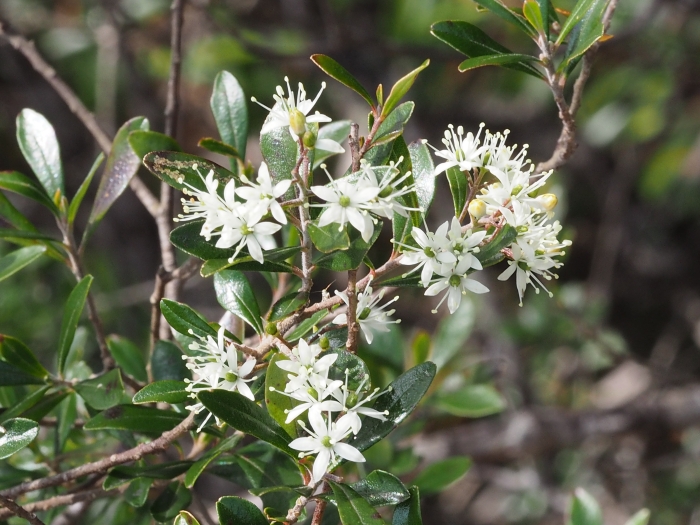Tall Phebalium
(Leionema elatius)
Tall Phebalium (Leionema elatius)
/
/

Geoff Derrin
CC BY-SA 4.0
Image By:
Geoff Derrin
Recorded By:
Copyright:
CC BY-SA 4.0
Copyright Notice:
Photo by: Geoff Derrin | License Type: CC BY-SA 4.0 | License URL: https://creativecommons.org/licenses/by-sa/4.0 | Uploader: Gderrin | Publisher: Wikimedia Commons | Title: Leionema_elatius.jpg | Notes: Barcode 01862532 |





Estimated Native Range
Summary
Leionema elatius, commonly known as Tall Phebalium, is an evergreen shrub native to the sclerophyll forests and scrublands of Eastern Australia. It typically grows to a height of 2–5 m (6 ft 7 in – 16 ft 5 in) with a variable habit, sometimes presenting smooth stems, while other individuals may have stems covered in star-shaped hairs. The leaves are narrow and leathery, adding to its textured appearance. Its flowers, which bloom in spring, are white to light yellow, 3–4.5 mm (0.12–0.18 in) long, and glandular, often attracting pollinators. The fruit is about 4 mm (0.16 in) long, furrowed, and less conspicuous than the flowers.
Tall Phebalium is valued for its resilience to drought and its ability to thrive in nutrient-poor soils, making it a suitable choice for xeriscaping and low-maintenance gardens. It is often used in native plant gardens, as a screen or hedge, and for erosion control on slopes. This shrub prefers full sun to part shade and requires very low to low water once established, reflecting its adaptation to the dry Australian environment. It is tolerant of a range of soil types, provided they have good drainage. While generally pest-free, it can be susceptible to root rot in poorly drained soils.CC BY-SA 4.0
Tall Phebalium is valued for its resilience to drought and its ability to thrive in nutrient-poor soils, making it a suitable choice for xeriscaping and low-maintenance gardens. It is often used in native plant gardens, as a screen or hedge, and for erosion control on slopes. This shrub prefers full sun to part shade and requires very low to low water once established, reflecting its adaptation to the dry Australian environment. It is tolerant of a range of soil types, provided they have good drainage. While generally pest-free, it can be susceptible to root rot in poorly drained soils.CC BY-SA 4.0
Plant Description
- Plant Type: Shrub
- Height: 3.5-6 feet
- Width: 3.5-6 feet
- Growth Rate: Moderate
- Flower Color: White
- Flowering Season: Spring, Summer
- Leaf Retention: Evergreen
Growth Requirements
- Sun: Full Sun, Part Shade
- Water: Very Low, Low
- Drainage: Medium
Common Uses
Bee Garden, Border Plant, Butterfly Garden, Low Maintenance
Natural Habitat
Native to sclerophyll forests and scrublands of Eastern Australia
Other Names
Common Names:
Scientific Names: , Leionema elatius,
GBIF Accepted Name: Leionema elatius (F.Muell.) Paul G.Wilson